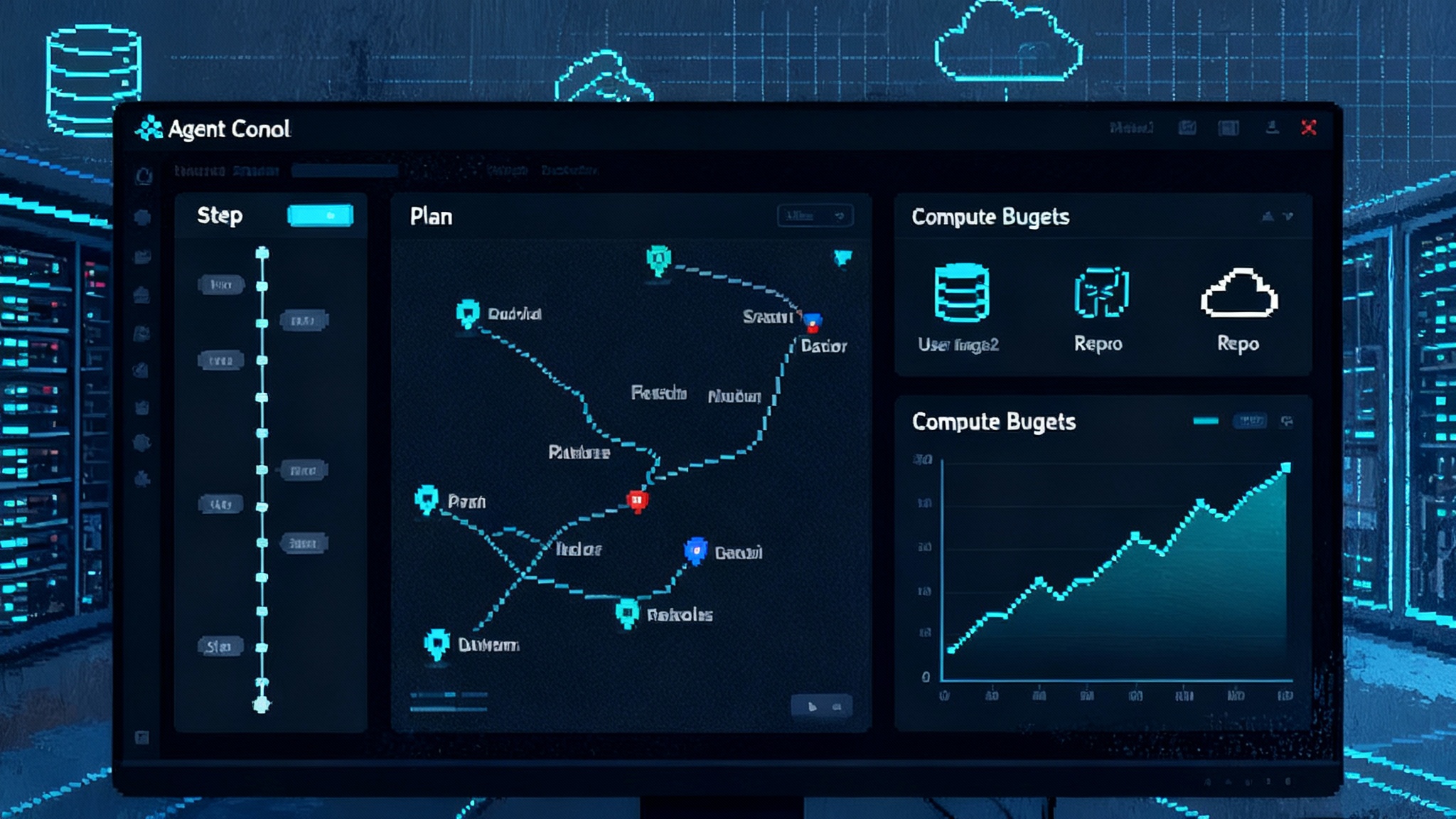Cursor 2.0’s Composer rewrites the IDE playbook
Cursor 2.0 pairs a purpose built coding model with a multi agent IDE, shifting developer workflows from chatty prompts to plan and execute loops. Here is the new playbook, the metrics that matter, and how to try it safely.

Breaking: a coding model and a multi agent IDE in one release
Cursor just shipped a two part update that signals where developer tools are heading next. The company introduced a house coding model, Composer, and a redesigned interface that treats agents as first class citizens inside the editor. The release frames a clear startup playbook: build a vertical model tuned for code, put it directly inside the IDE where work happens, then let multiple agents run in parallel on isolated branches with fast feedback loops. You can see the official details in the Cursor 2.0 and Composer announcement, and early third party commentary in an Ars Technica analysis of Composer and agents.
This is not a thin wrapper on a general chat model. It is a bet that domain specific models paired with an agent oriented user experience will beat layers that sit on top of someone else’s API. The most interesting piece is how Cursor stitches model, codebase memory, planning, sandboxed execution, and code review into one visible loop.
Why verticalizing the model inside the IDE matters
What does it mean to verticalize a language model for coding work? Think of a kitchen. A general model is a talented cook who can make almost anything if you bring the groceries and explain the recipe. A vertical coding model is a short order line that already knows your pantry, your oven, and your regulars by name. The ingredients are your repository, tests, and deployment scripts. The oven is the runtime and browser sandboxes embedded in the editor. The result is less waiting, fewer mistakes, and a steady rhythm from ticket to merged pull request.
In practice this looks like three design choices:
-
Optimize for latency where it matters. Composer is designed to complete most turns in well under a minute, which matters because coding is a tight iteration activity. Slow loops kill momentum and hide errors until they become expensive. Cursor claims a significant speedup compared with similarly capable models. The faster the loop, the more often you can ask the model to rewrite, replan, and retest without losing context.
-
Make the model codebase aware by default. Index the repository, supply semantic search over files, and preserve build and test context. Instead of slinging giant prompts, the agent calls tools that fetch precise snippets and project rules. The model reads diffs and test failures like a teammate who knows your standards, not an outsider handed a stack of photocopies.
-
Run plans in parallel with isolation. Cursor 2.0 lets you spin up multiple agents against the same request, each in its own worktree or remote sandbox, then compare diffs and pick a winner. That shifts the work pattern from back and forth chat to a tournament where several plans race and the best patch is merged.
Composer as a template for small frontier models
Call it the small frontier: a design target that balances capability with speed and cost. You do not need the biggest model to refactor a router, write a test harness, or chase a flaky selector. You need the fastest competent model that can see enough of your codebase, plan simple tool calls, and stream patch style edits without hallucinating structure.
Composer illustrates this target. It is trained and aligned for code editing and planning, not for broad conversation. It leans on built in tools like repo search and a browser to offload work where tools are exact. It streams diffs instead of whole files, which keeps context stable and reduces the chance of stepwise regression. Architecturally, the model acts like a conductor, the tools are the orchestra, and the sheet music is your repository index and tests.
For startups, this pattern is attractive because it keeps the hot path tight. Use a compact model with strong function calling, and let deterministic tools handle retrieval, edits, and execution. The goal is not to win a single headline benchmark. The goal is a planning loop so tight that engineers keep the agent in the critical path instead of using it as a sidecar.
If you are exploring what it takes to own more of that loop, compare this approach to how production agent teams are maturing in other domains. Our report on how Manus 1.5 signals the shift to production agents shows similar principles at work: smaller, faster models that call reliable tools and expose traceable plans.
From prompt chat to plan execute loops
Early coding assistants encouraged a conversational habit. You ask for a change, the bot replies, you refine the prompt, and repeat. Cursor’s update leans into plan execute loops. The agent proposes a plan, runs it inside a sandboxed branch, reads failures, adjusts, and presents a diff for review. Multiple agents can do this at once, each trying a different approach.
Imagine adding a feature flag across a monorepo. Instead of a single thread where you ask the model to touch ten services one after another, you spawn agents:
- Agent A updates the flag library and defaults.
- Agent B rewrites calls in the web client.
- Agent C adjusts server endpoints and middleware.
- Agent D writes an integration test that exercises the flow in a headless browser.
Each agent runs in an isolated worktree, commits its changes, and reports a patch with test results. You compare diffs, pick the best, and discard the rest. The work feels like a chess engine exploring branches in parallel, then surfacing the strongest line, not like a chat window filling with paragraphs.
This shift aligns with a broader move from prompts to production in agent ecosystems. Builders that treat tool calling, retries, and observability as first class concerns deliver more predictable outcomes. For a deep dive on how tuned models become a practical moat, see our analysis of fine tuning as the new moat for builders.
What to measure next: iteration speed, diff quality, branch safety
If you adopt this playbook, define a scorecard. Do not measure vibes. Measure throughput and safety.
1) Iteration speed
- Definition: wall clock time from a natural language task to a reviewed diff ready for merge.
- How to measure: instrument agent runs. Capture start and stop timestamps, number of turns, tool calls, and test cycles. Track median and p90 times per task type such as refactor, feature toggle, dependency bump.
- Goal: reduce median time while keeping failure triage visible. Speed without visibility creates brittle merges. A good target is sub minute turns and sub hour tasks for scoped changes, with live retries on failures.
2) Diff quality
- Definition: correctness and readability of the proposed patch.
- How to measure: create a rubric scored by code reviewers. Criteria include adherence to project conventions, completeness across modules, test coverage deltas, performance implications, and presence of dead code. Automate checks with linters and formatters so human review focuses on intent and edge cases.
- Goal: reduce rework cycles. Watch the percentage of diffs accepted without manual edits, the average number of review comments per patch, and the rate of follow up bug fixes within seven days of merge.
3) Branch safety
- Definition: risk that the agent corrupts the working tree or introduces cross file inconsistencies.
- How to measure: enforce branch isolation with worktrees or remote sandboxes and record collisions. Count how often the agent touches files outside the declared scope. Track test failure categories before and after merge.
- Goal: push collisions to near zero with strong scoping rules and project level policies. Use pre merge checks that run tests and static analysis in the agent’s branch, never in the main tree.
How to try this playbook in your stack
The safest way to adopt multi agent coding is to treat it like any other new production system: begin small, instrument heavily, and expand as you learn.
Step 1: Build the context backbone
Start with repository indexing and policy files. Build or adopt a semantic index that covers source, configuration, and tests. Add project rules that state which directories are in scope, how to name branches, and what to ignore. This turns agents from free roaming explorers into well briefed teammates. If your stack already invests in memory layers for other agents, the lessons from the memory layer arriving for agents will transfer directly.
Step 2: Pick a small frontier base model with strong tool calling
If you are not training your own model yet, select a competent base with low latency and reliable function calling, then layer in tools for search, file edit, command execution, and browser actions. Keep prompts short and stable. Prefer tool chains over long prose. Make a path to replace the base model later without rewriting your tools or policies.
Step 3: Stream diffs, not whole files
Have the agent propose patch hunks and explain intent inline. This makes review fast and helps your policy engine reject dangerous edits. Because you are streaming diffs, you can also implement early conflict detection before a plan veers into unrelated modules.
Step 4: Isolate every run
Use git worktrees or remote sandboxes, never the main working directory, so multiple agents can run without stepping on each other. Tear down sandboxes after merge. Log every command for audit and learning. Isolation also makes it cheap to run two or more plans in parallel without risking untracked file drift.
Step 5: Turn on parallel plans for tasks with many small touches
Good examples include renaming a configuration key across services, migrating from one HTTP client to another, or adding telemetry hooks. Poor candidates include sweeping architectural changes that demand deep design choices. When in doubt, route large design tickets to a human led exploration phase and reserve agents for the mechanical rollout once the design is fixed.
Step 6: Build a reviewer’s cockpit
Show a timeline of the plan, the commands executed, the diffs, and the tests that ran. Let reviewers compare two or more agent diffs side by side, pick the best, and annotate follow ups. Integrate coverage deltas and performance checks so reviewers see impact, not just textual changes.
Step 7: Instrument everything
Emit structured events for plan creation, tool calls, errors, retries, and final outcomes. Use that data to improve prompts, add new tools, and upgrade your model. Over time you will learn which prompts correlate with high quality diffs, which tools are brittle, and which test suites catch the most regressions.
Risk management: the guardrails that make speed safe
Speed without safety is a trap. Put guardrails in place before you scale parallel agents.
- Branch protection rules: require tests and static analysis to pass before merge. Keep a human in the loop for any change that crosses service boundaries or touches security sensitive code.
- Scope contracts: every agent plan should declare the directories and files it intends to touch, the expected test suites to run, and the rollback steps. If an agent attempts to edit outside the declared scope, cancel the run.
- Fuzz tests for diffs: when agents change serializers, URL routers, or parsers, generate random inputs to catch brittle behavior. This practice finds edge cases that unit tests miss and is cheap to automate.
- Staging with timeouts: let agents run in a staging environment with a hard ceiling on compute. Plans that wander or loop get cut off and labeled for investigation rather than chewing through credits.
- Regression buckets: tag failures by type such as context miss, tool misuse, flaky test, or deterministic bug. Use these buckets to focus training and prompt changes where they pay off fastest.
Where Cursor fits in the competitive landscape
Cursor is not alone in pushing agent centric coding. Microsoft has been evolving workspace level planning in Copilot, Google has shown research demos where agents propose and apply multi step patches, and JetBrains is threading agents through its tightly integrated editor stack. The shared direction is clear. The competition is not about who autocompletes a line better. It is about who turns a human intent into a safe, shippable diff the fastest with the least friction.
The open question is ownership of the feedback loop. Whoever controls the loop inside the IDE learns the most from real attempts, not synthetic datasets. That knowledge compounds. It influences which tools to build next, which guardrails to add, and which failure modes to fix. Cursor’s decision to ship a house model plus a multi agent console is a direct move to own that loop. If you want an outside read of this dynamic, the Ars Technica analysis of Composer and agents situates the launch in the broader race.
A practical checklist for teams
- Pick two or three task templates where you expect clear wins: dependency upgrades, config migrations, and test scaffolding are great starters.
- Define success metrics before rollout: median task time, acceptance rate of diffs, and post merge incident rate.
- Start with one agent and two parallel plans. Scale to four or more when collision and review overhead drops.
- Document project rules. Teach the agent which directories are frozen, which code owns which features, and which tests gate merges.
- Keep humans focused on intent and tradeoffs. Let the agent grind through repetitive edits and test runs.
- Close the loop. Feed traces from successful and failed plans into your model and prompt updates.
What this means for startups building devtools
If you are a startup, the Cursor 2.0 pattern clarifies where to invest:
- Own the latency budget. Keep hot loops under a minute and make retries cheap.
- Treat retrieval and execution as products, not utilities. Your search, file edit, and sandbox tools will make or break perceived model quality.
- Design for parallelism. Plans should be divisible and comparable. The cockpit should make selection between competing diffs effortless.
- Train on real traces. Even if you license a base model, curate your own fine tuning sets and preference data from real use.
- Ship opinionated defaults. Developers reward tools that reduce decisions. Prebuilt policies, reviewer rubrics, and branch templates will accelerate adoption.
If you follow this line, you will find yourself converging on many of the same principles that power production agent systems in other industries. The pattern is recognizable because it works.
The takeaway
Cursor 2.0 is not just a version number. It is a blueprint for turning language models into working teammates inside the editor. The combination of a purpose built coding model, tight codebase context, and parallel plan execution converts chatty prompts into reliable diffs. If you want your team to move faster without breaking branches, measure iteration speed, diff quality, and branch safety, then push toward plan execute loops that make progress visible. Agile teams will not beat hyperscalers with bigger models alone. They will win by owning the loop where code becomes commits.
For teams that want to dig deeper into the implications for production agents and tuned models, cross reference our work on production agents hitting the floor and on fine tuning as a defensible moat. Pair those lessons with the specifics in the Cursor 2.0 and Composer announcement and you will have a practical map from pilot to day to day use.








